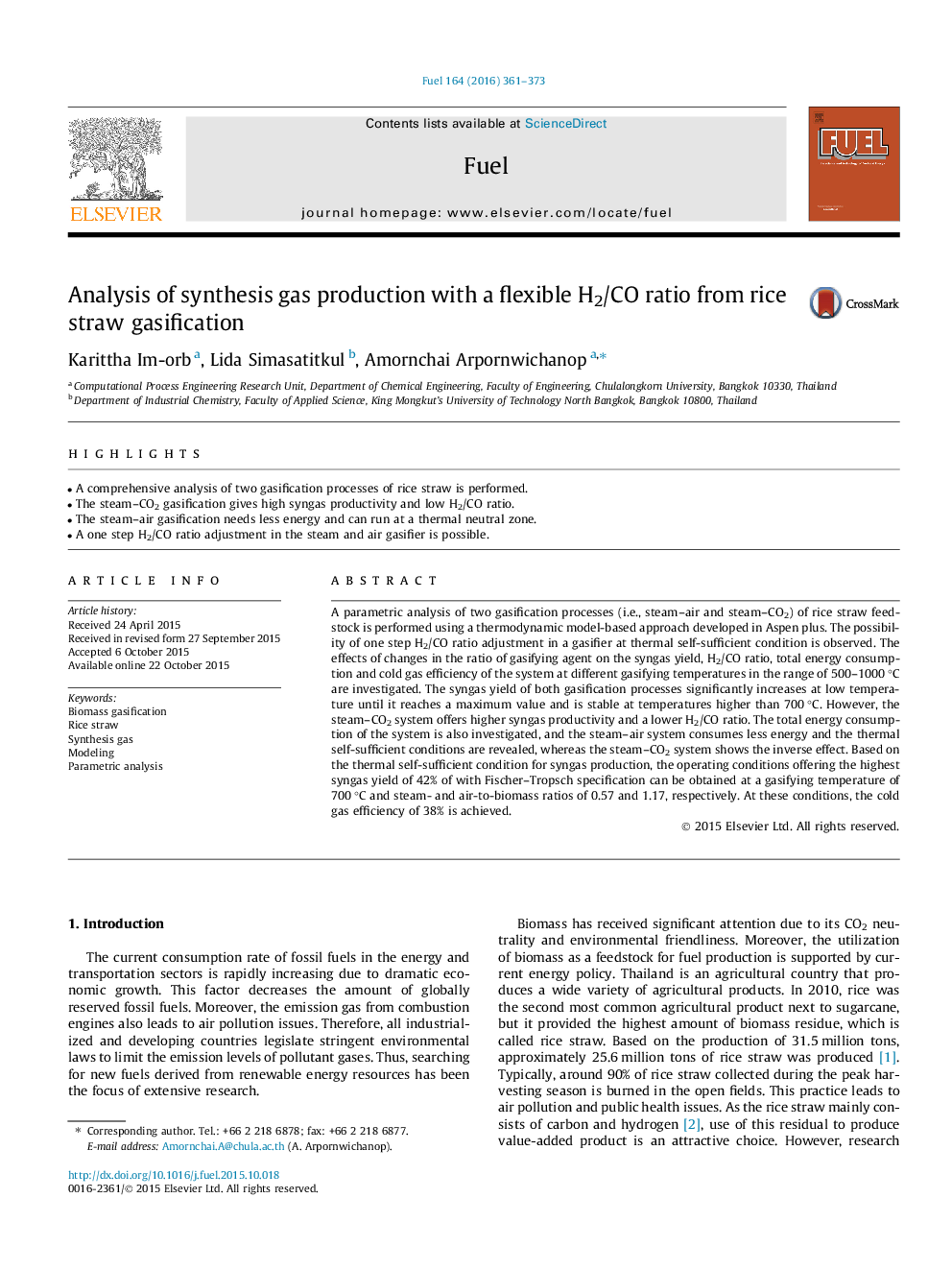| Article ID | Journal | Published Year | Pages | File Type |
|---|---|---|---|---|
| 205408 | Fuel | 2016 | 13 Pages |
•A comprehensive analysis of two gasification processes of rice straw is performed.•The steam–CO2 gasification gives high syngas productivity and low H2/CO ratio.•The steam–air gasification needs less energy and can run at a thermal neutral zone.•A one step H2/CO ratio adjustment in the steam and air gasifier is possible.
A parametric analysis of two gasification processes (i.e., steam–air and steam–CO2) of rice straw feedstock is performed using a thermodynamic model-based approach developed in Aspen plus. The possibility of one step H2/CO ratio adjustment in a gasifier at thermal self-sufficient condition is observed. The effects of changes in the ratio of gasifying agent on the syngas yield, H2/CO ratio, total energy consumption and cold gas efficiency of the system at different gasifying temperatures in the range of 500–1000 °C are investigated. The syngas yield of both gasification processes significantly increases at low temperature until it reaches a maximum value and is stable at temperatures higher than 700 °C. However, the steam–CO2 system offers higher syngas productivity and a lower H2/CO ratio. The total energy consumption of the system is also investigated, and the steam–air system consumes less energy and the thermal self-sufficient conditions are revealed, whereas the steam–CO2 system shows the inverse effect. Based on the thermal self-sufficient condition for syngas production, the operating conditions offering the highest syngas yield of 42% of with Fischer–Tropsch specification can be obtained at a gasifying temperature of 700 °C and steam- and air-to-biomass ratios of 0.57 and 1.17, respectively. At these conditions, the cold gas efficiency of 38% is achieved.
